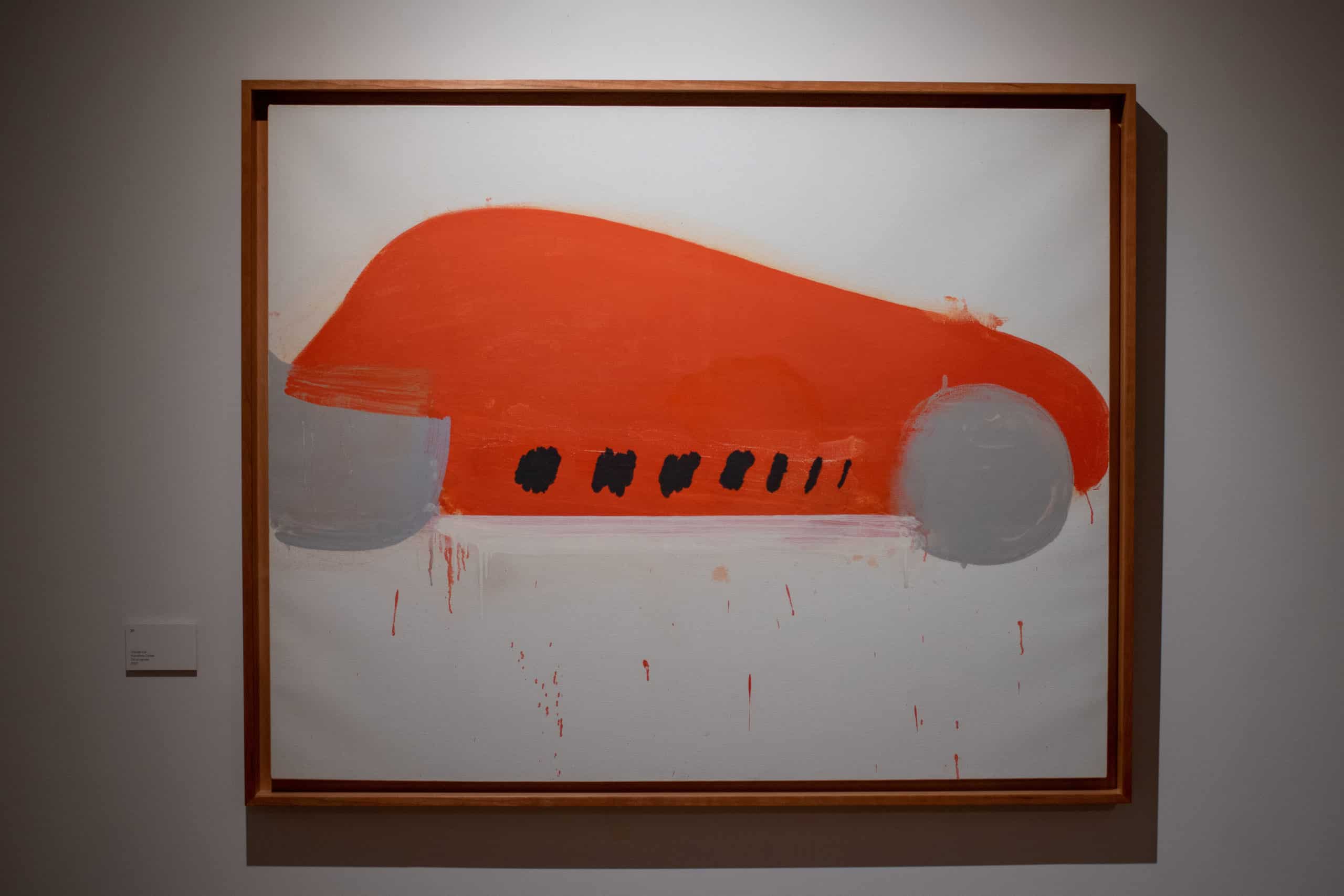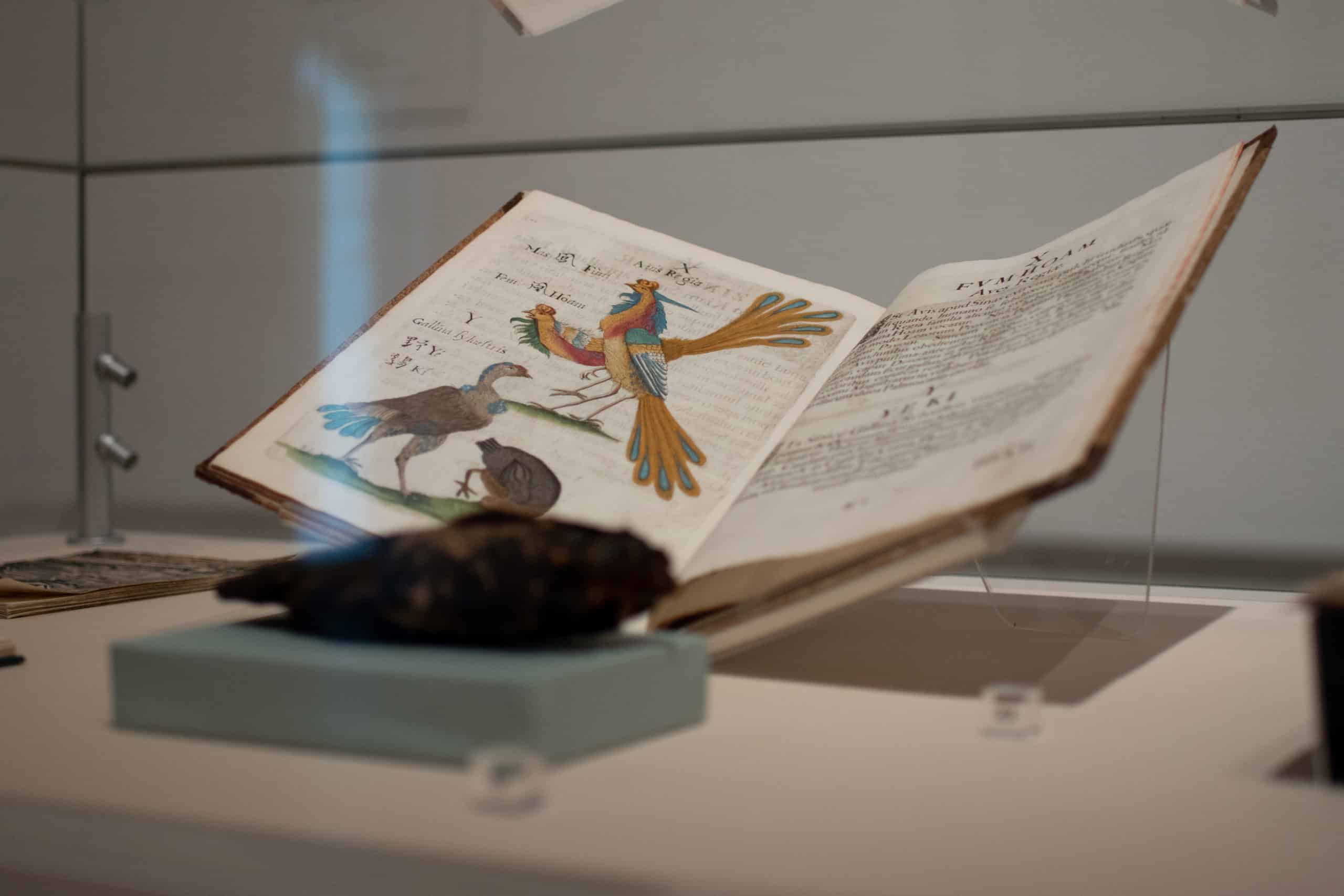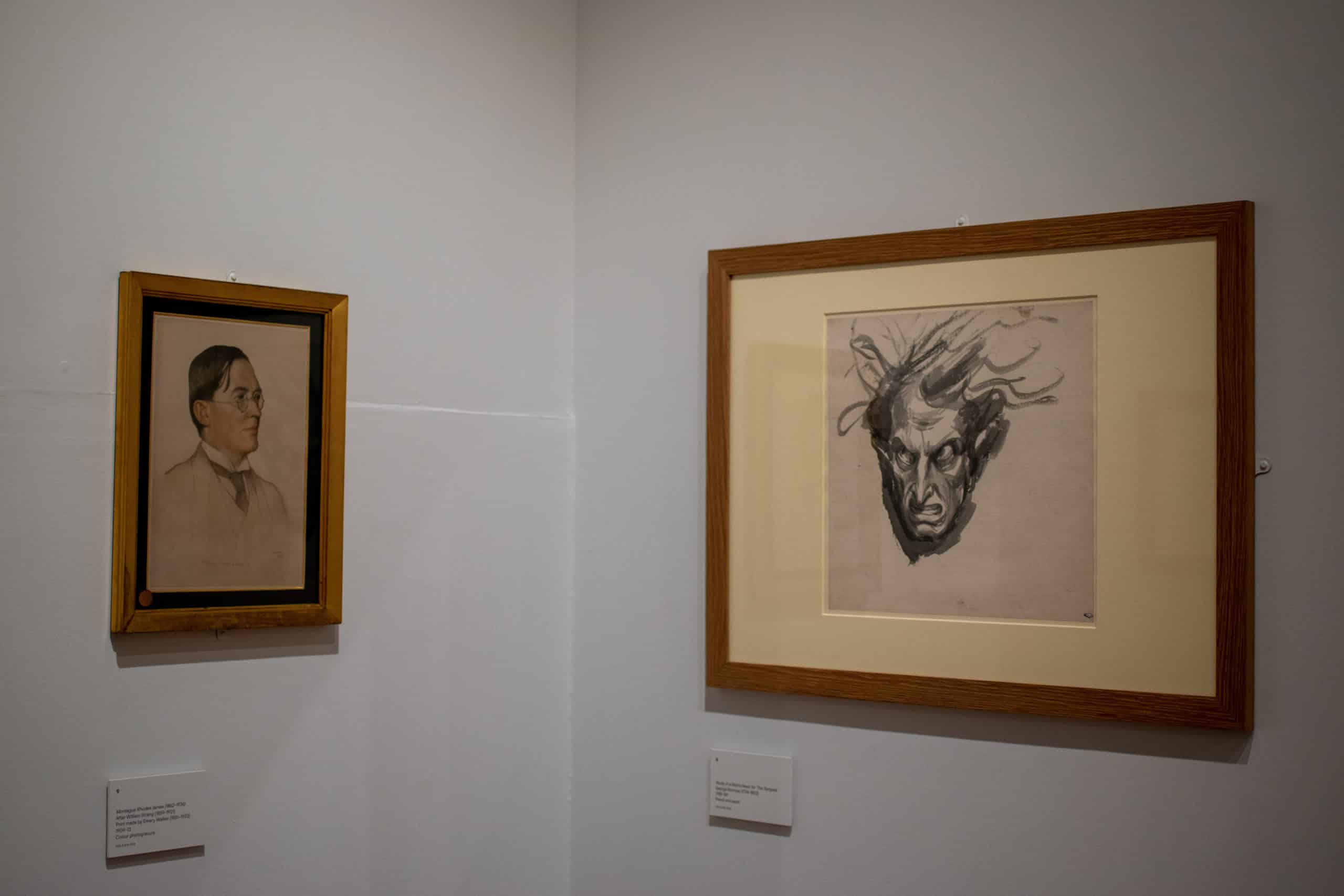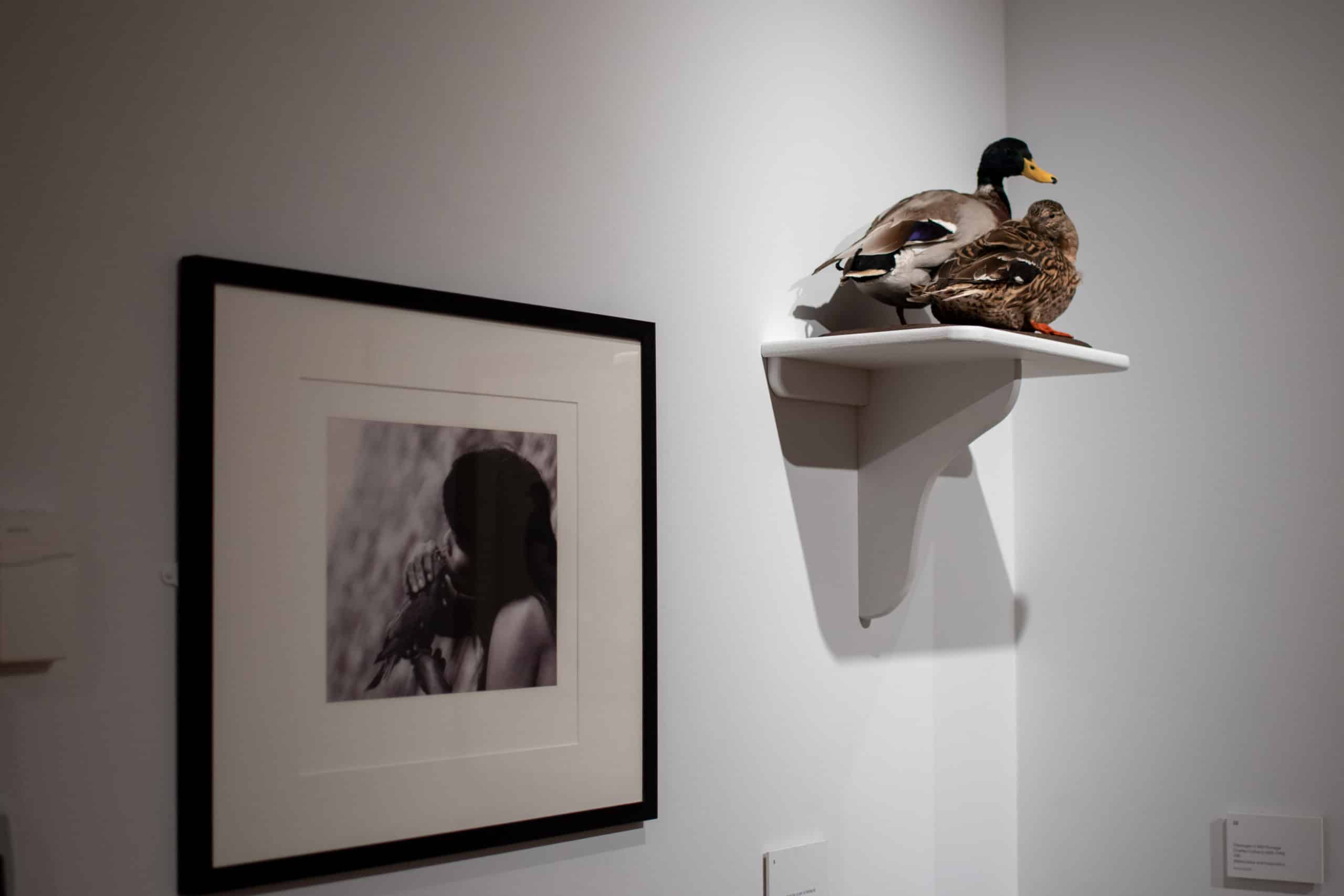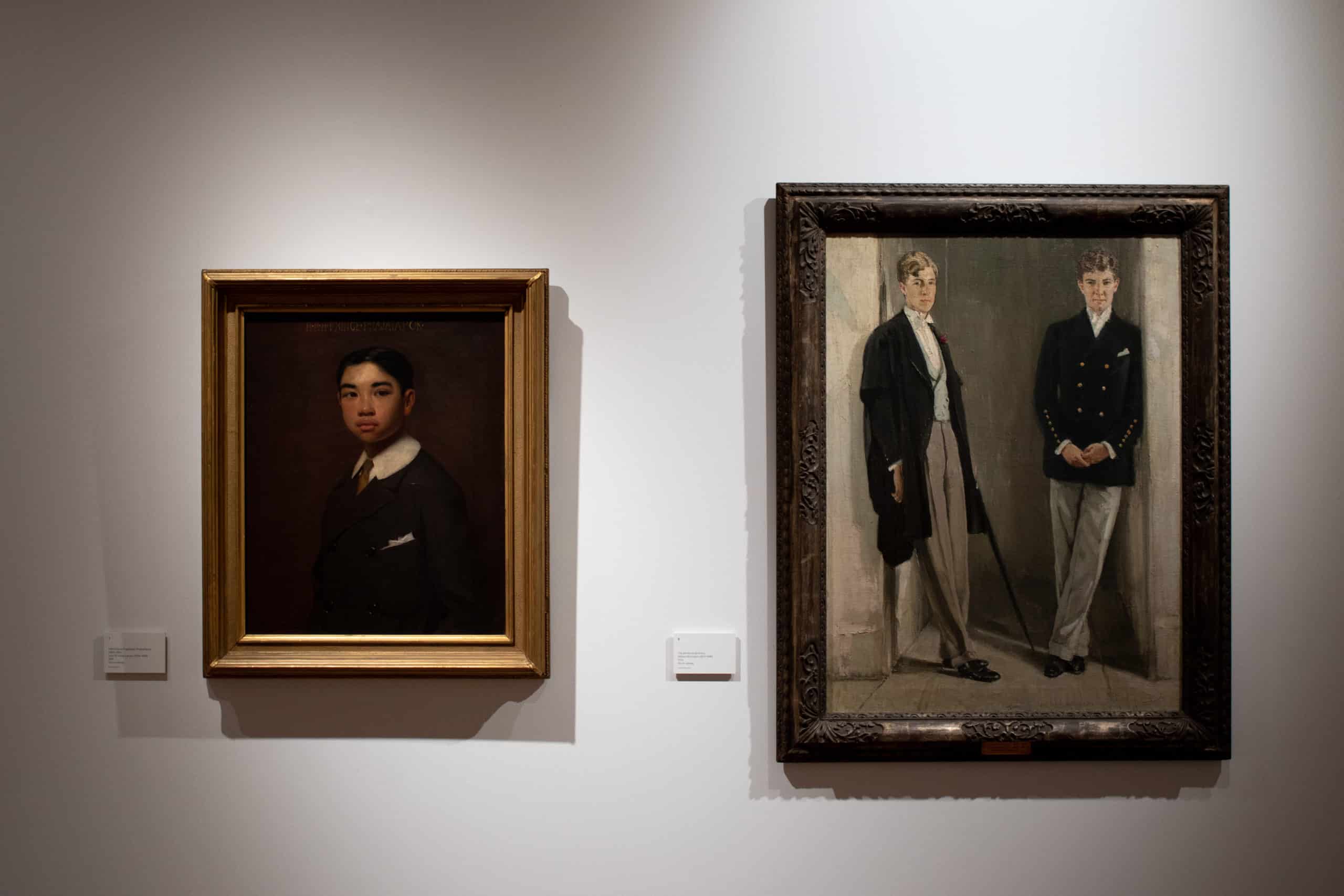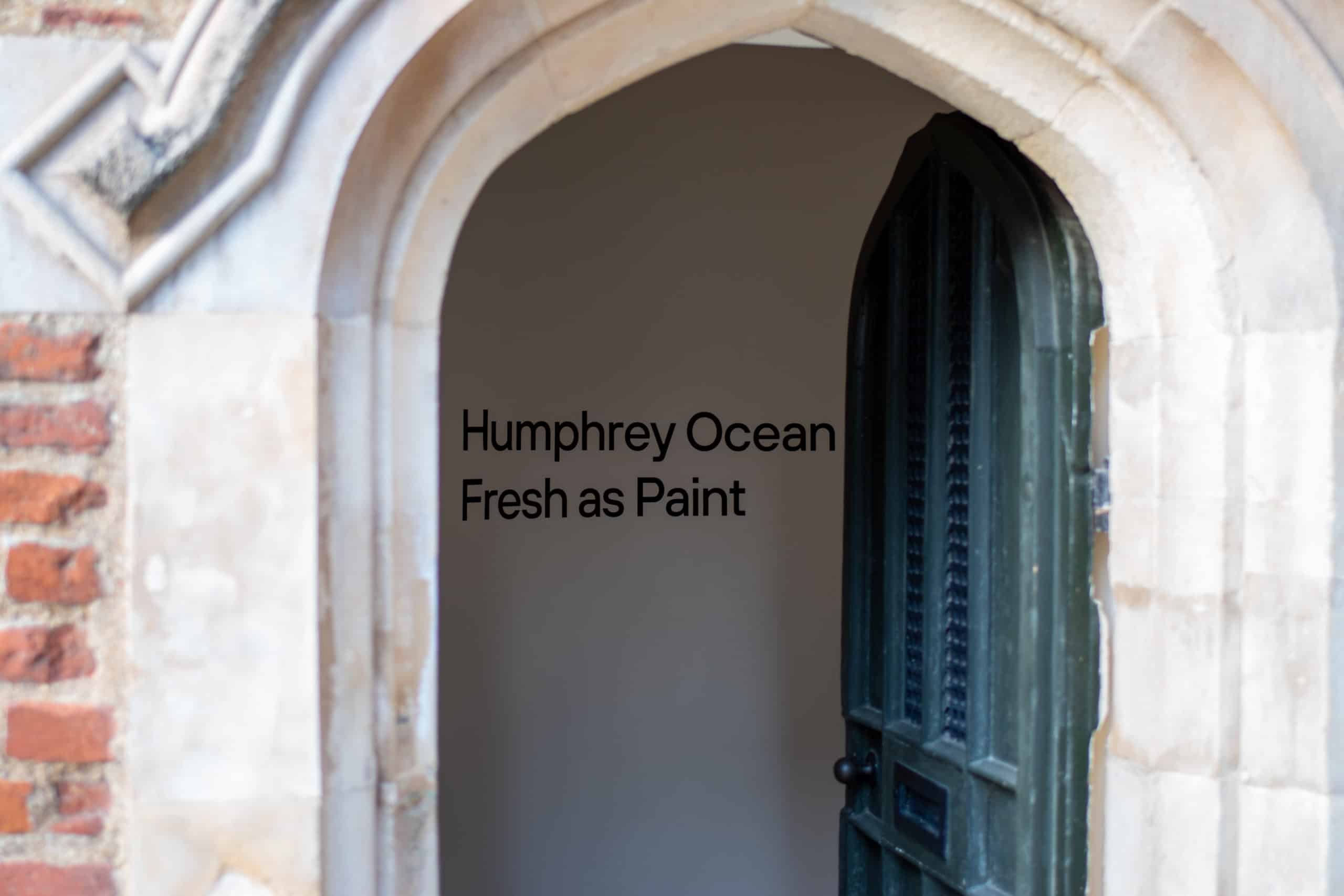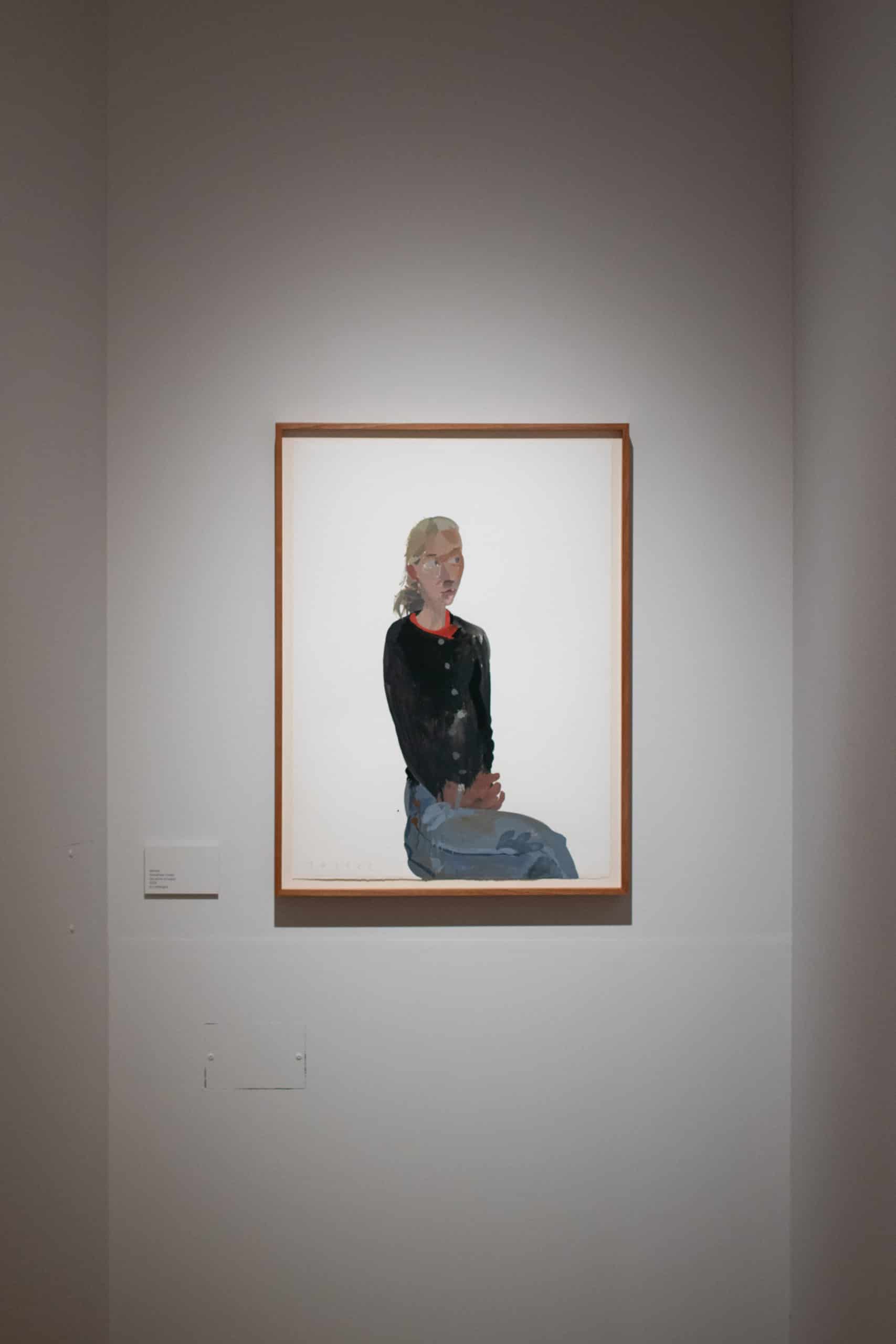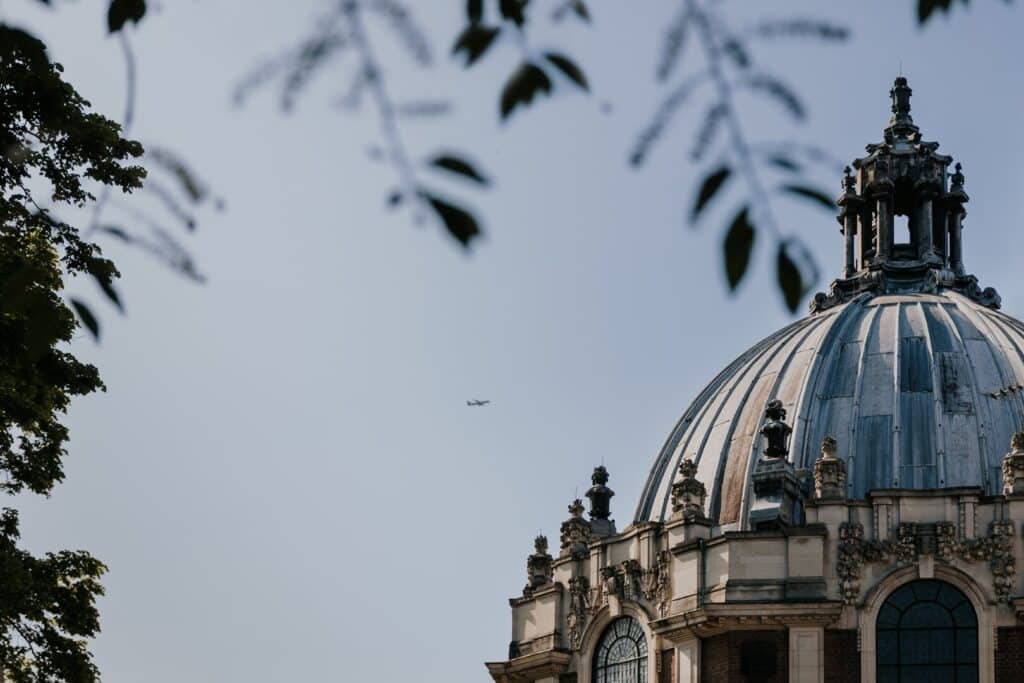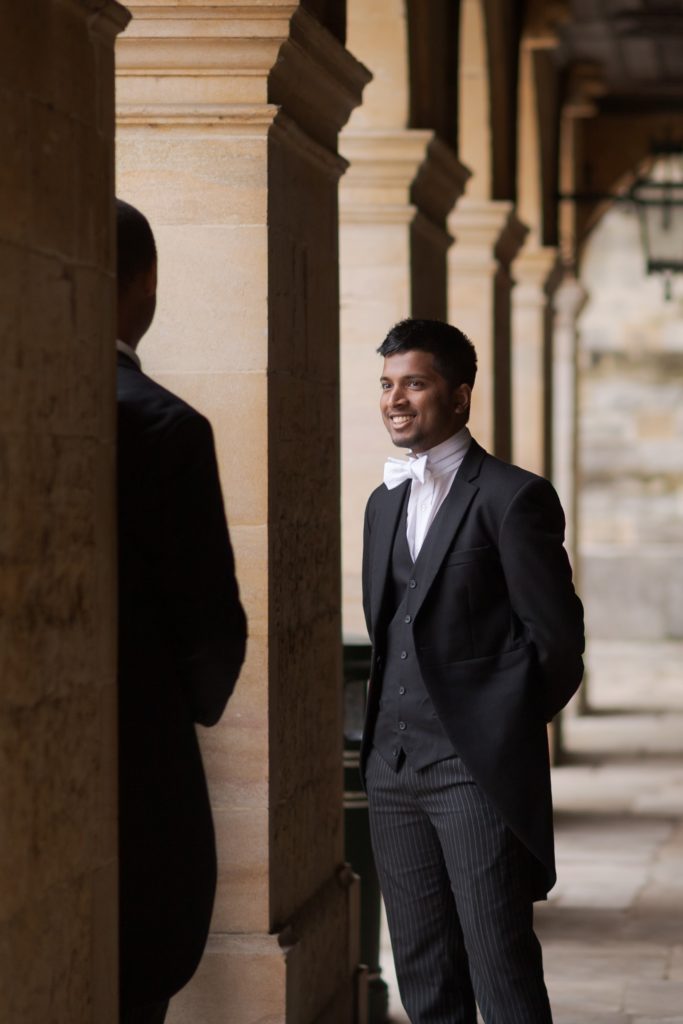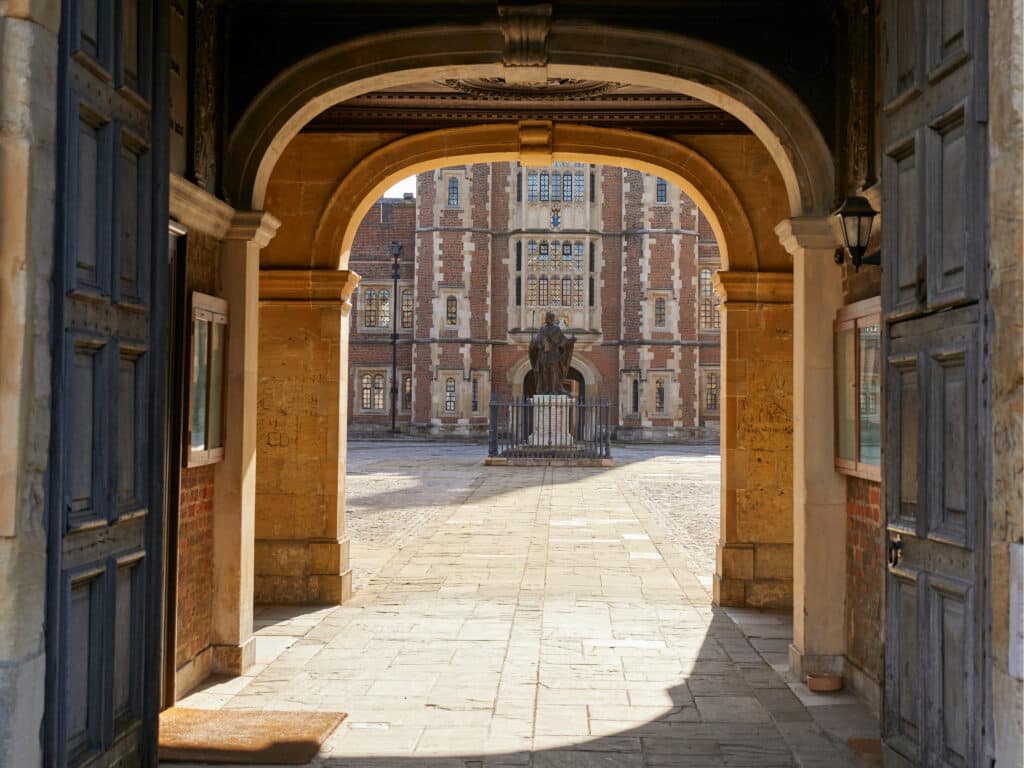Alexander Cozens Society presents Humphrey Ocean RA
On 21 September, the Verey Gallery and the Alexander Cozens Society were fortunate to host the one and only Humphrey Ocean. Ocean is an acclaimed artist, bass player and Royal Academician. He is known to the world for his iconic portraits, and more recently his portraits of birds, all created in his unique and personal style. In his early years Ocean played bass with a band he formed with Ian Dury who, then a painter, had taught him at Canterbury College of Art. This is where he found his way into the art world designing an album cover for 10cc and an inner sleeve for Paul McCartney and the Wings. His painting Lord Volvo and his Estate won the Tobacco Portrait Award (now known as the BP Portrait Award). Part of the prize was a commission for the National Portrait Gallery, resulting in his portrait of Sir Paul McCartney and kickstarting a lasting relationship with the Gallery. He later painted a portrait of Philip Larkin which has become one of his most recognisable works. Surprisingly this list of numerous accolades was not the subject of his talk nor was the focus an explanation of the exhibition itself. Instead, the evening provided a view into the mind of an artist.
Ocean curated the exhibition, Fresh as Paint, for the Verey Gallery and so it would be reasonable for one to assume he would talk us through this exhibition and field questions from the audience. Instead, we received a deep dive into a few of his paintings and an insight into some of his ideas on morality, the human psyche and the environment. First, it is important to understand what drove him to select the objects that occupy the exhibition space, and his words articulate this better than I can…
I went for things that moved me. Quite why it is not easy to say.
The exhibition itself is a collection of objects and artworks from the Eton College Collections that resonated personally with Ocean. As he described, the objects he selected were all, once, modern and as a result, remind us of what it is to be human. He placed emphasis on how despite some of the objects being centuries old, such as the Elizabethan chalice, they are fresh, and their modernity is something tangible in this modern day and age. His reasoning for choosing particular objects were interesting and unique – certainly different to any explanation I’d ever experienced. For example, he stated how difficult he found it to understand an avid birdwatcher, who will search tirelessly for a rare bird, when the mallard, which is not particularly rare or unusual, is right in front of him, and is ignored. In selecting a pair of stuffed mallards for display, he is highlighting how far he is motivated to represent the commonplace, a theme he often explores in his own paintings.
Orange Car painted in 2022 dominates one wall of the gallery and implores the viewer to ask many questions of it. Why this shape? Why the orange colour? Why is there no door? Through these questions the painting is accomplishing what Ocean wanted it to; it is provocative. He wants the viewer to question why the car is so recognisable or why we are so familiar with its shape. His environmental awareness was made obvious as he talked about this painting. Ocean hopes that people will reconsider how much they rely on this machine that every day further pollutes and destroys our planet.
Another question about his style and technique promoted him to talk about the human psyche. He believes that six-year-olds’ drawings are the truest they will ever be to nature because at seven, the child becomes aware of what his or her peers are doing. As a result, they are discouraged by the drawings of others that they perceive to be better. He said that this is a quality he has purposefully held on to in his art. Clearly, he is also aware that many people don’t understand or even dislike his art, but for Ocean, art is a personal endeavour, and if it happens to resonate with five or six people, he will have succeeded.
Ocean wanted us to challenge our perception of modernity and art through historical objects that were once commonplace. He implored us to challenge and value the modern amenities available to us today and to realise that these objects are what truly shapes the way we live and who we grow up to be.
Thus, I end with Ocean’s opening:
What does it mean, to you, to be human?
Fresh as Paint is on display in the Verey Gallery until Sunday 30 October 2022. It is open every Sunday afternoon 2.30 – 5pm, or between 10 – 4pm, Monday to Friday by appointment. Please contact [email protected] for further details.
